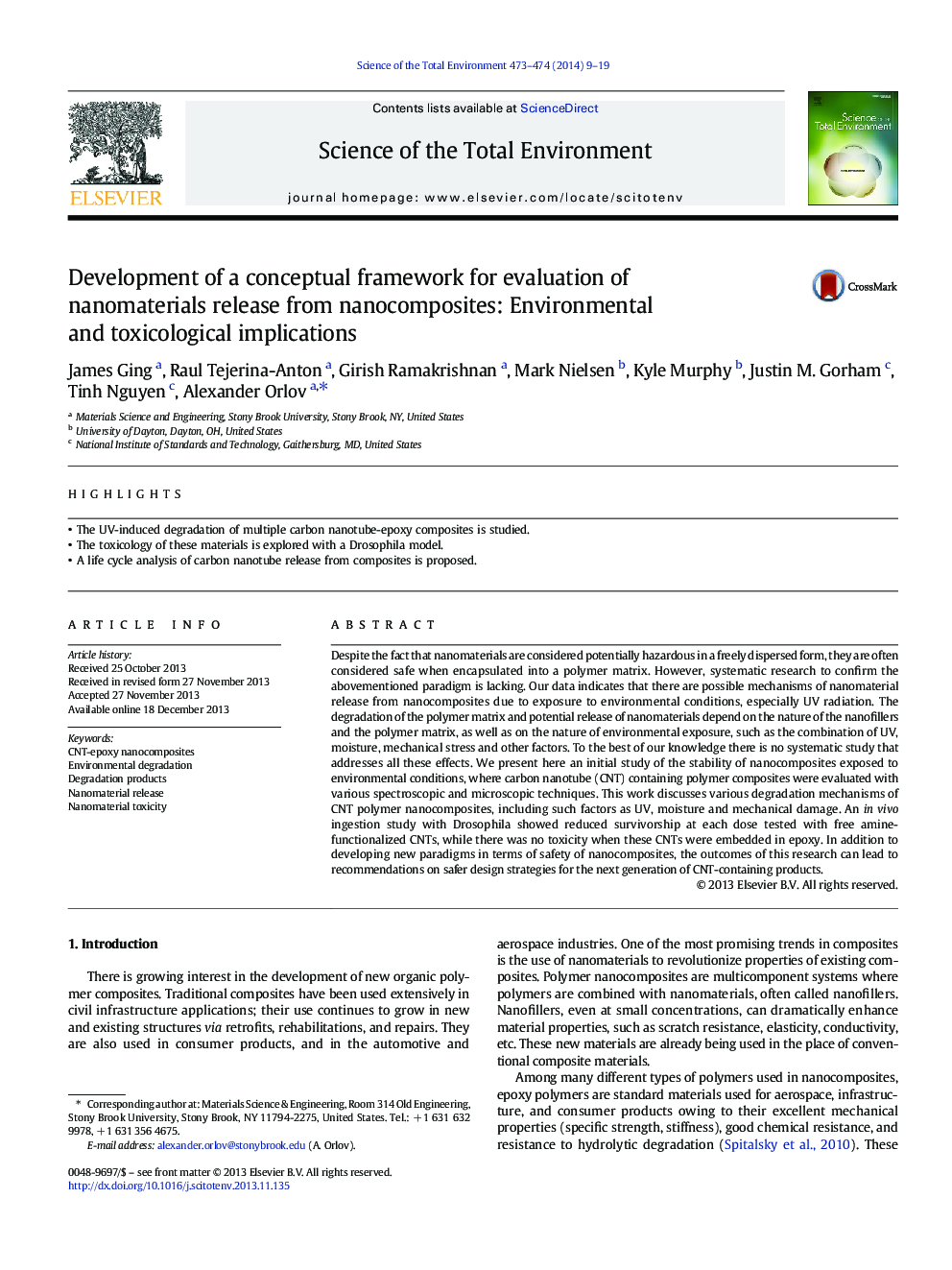| Article ID | Journal | Published Year | Pages | File Type |
|---|---|---|---|---|
| 6331587 | Science of The Total Environment | 2014 | 11 Pages |
Abstract
Despite the fact that nanomaterials are considered potentially hazardous in a freely dispersed form, they are often considered safe when encapsulated into a polymer matrix. However, systematic research to confirm the abovementioned paradigm is lacking. Our data indicates that there are possible mechanisms of nanomaterial release from nanocomposites due to exposure to environmental conditions, especially UV radiation. The degradation of the polymer matrix and potential release of nanomaterials depend on the nature of the nanofillers and the polymer matrix, as well as on the nature of environmental exposure, such as the combination of UV, moisture, mechanical stress and other factors. To the best of our knowledge there is no systematic study that addresses all these effects. We present here an initial study of the stability of nanocomposites exposed to environmental conditions, where carbon nanotube (CNT) containing polymer composites were evaluated with various spectroscopic and microscopic techniques. This work discusses various degradation mechanisms of CNT polymer nanocomposites, including such factors as UV, moisture and mechanical damage. An in vivo ingestion study with Drosophila showed reduced survivorship at each dose tested with free amine-functionalized CNTs, while there was no toxicity when these CNTs were embedded in epoxy. In addition to developing new paradigms in terms of safety of nanocomposites, the outcomes of this research can lead to recommendations on safer design strategies for the next generation of CNT-containing products.
Related Topics
Life Sciences
Environmental Science
Environmental Chemistry
Authors
James Ging, Raul Tejerina-Anton, Girish Ramakrishnan, Mark Nielsen, Kyle Murphy, Justin M. Gorham, Tinh Nguyen, Alexander Orlov,
